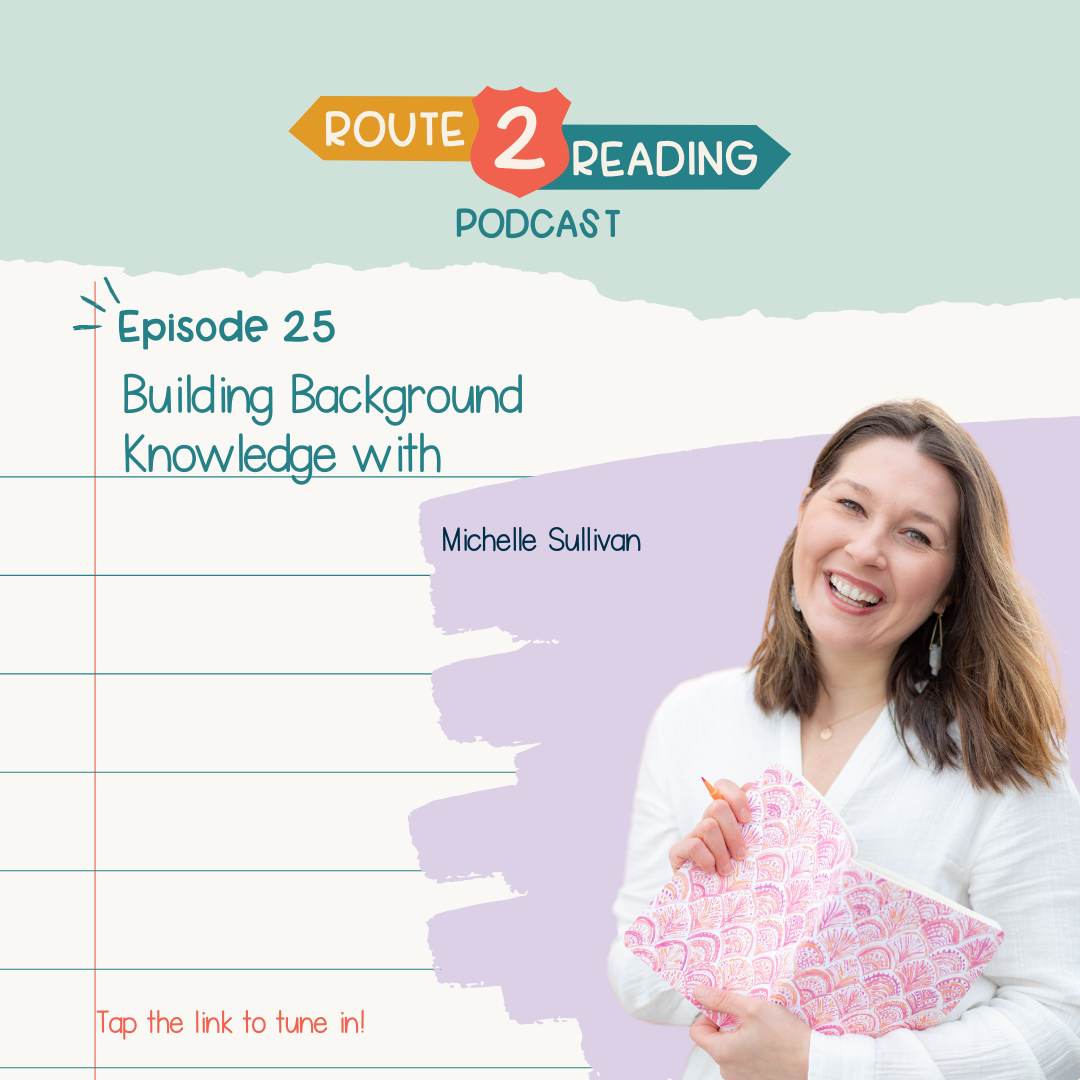Building Background Knowledge
Meet Michelle Sullivan:
Elementary literacy coach based in New Jersey.
Spent over a decade in literacy roles and was a reading interventionist before becoming a coach.
Face and mastermind behind The Colorful Classroom where she empowers teachers with knowledge and equips them with what they need to teach literacy colorfully.
History, humanities, and classics enthusiast, which has lent itself to her expertise in background knowledge when it comes to literacy.
Check her out!
Website: The Colorful Classroom
Instagram: michelle_thecolorfulclassroom
All About Background Knowledge
Dr. Katie Cuningham, Jan Burkins, and Kari Yates’ book Shifting the Balance comes highly recommended on this topic, as they discuss how knowledge impacts comprehension.
Background knowledge is one of the language comprehension strands in Scarbourough’s Reading Rope and it’s essential for comprehension.
Background knowledge is not to be confused with prior knowledge.
Prior knowledge → all of the knowledge, skills, experiences, and abilities that you bring with you. Ask yourself: What do students already know?
Background knowledge → specific to a certain situation, problems, and concepts. Background knowledge is topic-based knowledge that students need in order to access the specific text that’s being read. Research says that this is a strong predictor of comprehension!
Ask yourself: How can we build knowledge for students on a specific topic?
We must be aware as teachers that kids will come to us with varying degrees of prior knowledge and background knowledge about a certain topic.
The Importance of Building Background Knowledge
“Prior knowledge about a topic at hand is like mental Velcro. The relevant knowledge gives words of the text places to stick and make sense, thereby supporting comprehension and propelling the reading process forward.” - Marilyn Adams
When a student has “mental Velcro”, it makes everything they're learning about that much stickier.
Natalie Wexler’s book, The Knowledge Gap, discovered that having background knowledge in a certain subject made a significant difference in a person’s ability to understand the text.
What’s more, students with a lower level of reading but with proper background knowledge actually outperformed students who were at a higher reading level with limited background knowledge.
In short: Background knowledge contributes massively to a student’s reading comprehension.
Strategies for comprehension actually fall short if a student doesn’t have enough background knowledge.
The teacher is the key for students to gain background knowledge so they can access the text.
5 Ways How to Build Background Knowledge
Integrate science and social studies into our literacy instruction - stop teaching “in silos!”
When we integrate these subjects into reading, teaching becomes knowledge-building.
When we focus on content, students are able to understand more about the world and comprehend a wider variety of texts.
Writing is one of the best ways to build knowledge.
It helps articulate ideas so students solidify their understanding of a certain topic.
It helps students to explain ideas to others through writing.
As teachers, we always wonder How do I fit everything in? By integrating other subjects within your literacy - that’s how! When we think about what we can do with cross-curricular activities, we can enhance our learning and our time.
Maximize instructional read-alouds
Students are exposed to cultures and ideas when teachers share stories that are rich, engaging, and thoughtful. This expands on their understanding of the world.
During this time, teachers are doing the decoding for the students - they’re taking some of the “heavy lifting” out of reading for them. This then allows students to access the text that they otherwise wouldn’t have been able to access during their own independent reading.
Assemble Solid Text Sets
Ensure that you have diverse texts around a certain topic - Michelle calls these “expert bins.”
Through diverse texts, teachers can help students broaden their understanding of a topic. This is because certain ideas will be available in one text while other ideas are available in another. This encourages critical thinking skills in students and exposes them to different perspectives.
Frontload Knowledge with Authentic Artifacts
Expose students to artifacts (these could be authentic photographs or videos) to bring this information to life. This enhances their understanding of the text.
Multimedia to Build Background Knowledge
Poems, songs, photos, videos - all sorts of media can help students understand ideas within the text.
To boot, this diverse multimedia is fun and engaging for students!
Teacher Tips:
We build background knowledge bit by bit, piece by piece, drop by drop. It’s impossible to know everything about the subject of a book before you read it.
Building background information doesn’t have to feel overwhelming - and shouldn’t! No one’s brain works in the way of learning everything all at once.
When building background knowledge, think depth (share a lot) and breath (over time the knowledge will get deeper). Remember that knowledge is always growing!


